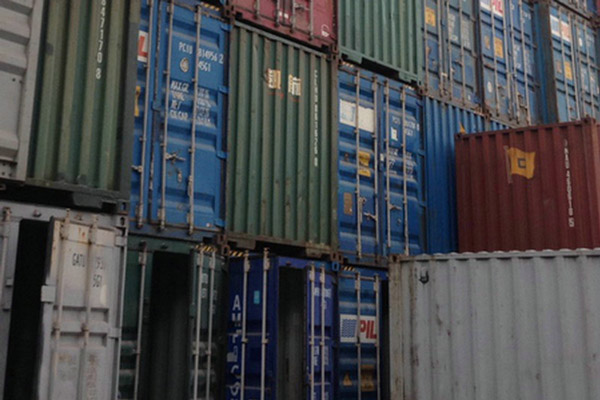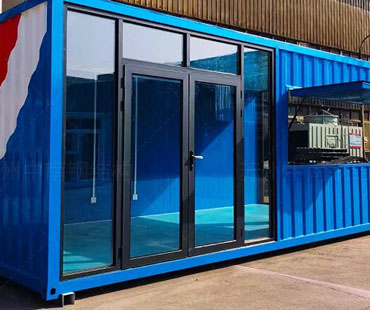As global trade continues to expand, the importance of securing cargo during transportation has become more crucial than ever. Shipping containers, while incredibly useful for transporting goods across vast distances, present unique challenges in terms of security and protection. Theft, damage, and loss can have significant financial implications for businesses and impact supply chain integrity.
1. Understanding the Security Risks
Before implementing effective security measures, it's vital to comprehend the various risks associated with container transportation. These include:
-Theft and Pilferage: Containers can be targeted during transport, especially when left unattended at ports or in transit. Criminals may attempt to break into containers or steal entire units.
-Damage: Containers can be subjected to harsh environmental conditions, accidents, or mishandling, leading to potential damage to the cargo inside.
-Tampering: Unauthorized access to a container can result in tampering with the contents, which is particularly concerning for sensitive or hazardous materials.
2. Implementing Physical Security Measures
Physical security measures are the first line of defense in protecting shipping containers:
-High-Quality Locks and Seals: Investing in robust locking mechanisms and tamper-proof seals can deter unauthorized access. These seals should be inspected regularly to ensure they remain intact throughout the journey.
-Container Design: Utilizing reinforced containers designed to withstand tampering can enhance security. Containers with built-in security features, such as lockable doors and durable materials, are recommended.
-Surveillance Systems: Installing CCTV cameras at loading docks and storage areas can help monitor activity around containers. Remote monitoring systems can provide real-time alerts if suspicious behavior is detected.
3. Utilizing Technology for Enhanced Security
Advancements in technology have revolutionized container security. Key technological strategies include:
-GPS Tracking: Installing GPS tracking devices in containers allows for real-time monitoring of their location. This technology can alert operators to any deviations from planned routes, enabling swift action in case of theft or loss.
-IoT Sensors: Internet of Things (IoT) sensors can provide data on temperature, humidity, and environmental conditions. These sensors ensure that cargo, particularly perishables, is kept in optimal conditions and can alert stakeholders if something is amiss.
-Blockchain Technology: Using blockchain for supply chain management enhances transparency and traceability. Each transaction involving the container can be recorded on the blockchain, providing a secure and immutable record that helps prevent fraud.

4. Training and Awareness
Human factors play a significant role in container security. Training personnel involved in the shipping process is essential:
-Security Training: Regular training sessions on security protocols can equip employees with the knowledge to recognize potential threats and respond effectively. This includes training on how to properly seal containers and recognize tampering attempts.
-Awareness Programs: Creating a culture of security awareness among all employees involved in the supply chain can enhance vigilance. Employees should feel empowered to report suspicious activities or concerns.
5. Collaboration and Communication
Collaboration across various stakeholders is critical for effective container security:
-Shipping Companies and Ports: Establishing strong communication channels between shipping companies and port authorities can facilitate better coordination in monitoring and securing containers. Regular security audits and joint training exercises can enhance overall security protocols.
-Customs and Law Enforcement: Collaborating with customs officials and law enforcement agencies can provide additional layers of security. Sharing information about high-risk shipments or routes can help mitigate potential risks.
6. Comprehensive Insurance Coverage
Despite the best efforts to secure containers, risks can never be entirely eliminated. Therefore, having comprehensive insurance coverage is essential:
-Cargo Insurance: Investing in robust cargo insurance can protect businesses from financial losses due to theft, damage, or loss of goods during transit. Understanding the terms and conditions of the policy is crucial to ensure adequate coverage.
-Liability Insurance: Shipping companies should also consider liability insurance to cover any potential legal claims arising from security breaches or cargo damage.
Ensuring the security and protection of shipping containers is a multifaceted challenge that requires a comprehensive approach. By understanding the risks, implementing physical and technological security measures, training personnel, collaborating with stakeholders, and maintaining proper insurance coverage, businesses can significantly enhance the safety of their cargo transportation processes. As global trade continues to evolve, prioritizing container security will not only protect valuable assets but also reinforce trust in supply chains, ultimately contributing to smoother and more reliable international trade.


